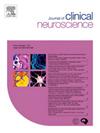Safety considerations for spinal surgery in patients with deep brain stimulation devices
IF 1.9
4区 医学
Q3 CLINICAL NEUROLOGY
引用次数: 0
Abstract
Purpose
Deep brain stimulation (DBS) has been performed for various brain disorders. However, spinal surgery in patients with DBS was been approached with cautious trepidation due to risk of thermal brain injury and device damage from coagulation devices during surgery. This study presents the cases of successful spinal surgery performed after DBS implantation.
Methods
We retrospectively reviewed the patients who received spinal surgery after DBS implantation between April 2001 and November 2022. We reviewed their demographic data, preoperative evaluations, and surgical strategies employed.
Results
Among 348 patients who underwent DBS implantation, eight patients received spinal surgery. The methods used for diagnosing their spinal conditions varied: two cases of computed tomography (CT) myelogram, one case of CT scan with pre-DBS magnetic resonance imaging (MRI), one case of CT scan only, and four cases of post-DBS MRI. The location of the spinal surgery were one case of cervical spinal surgery, three cases of thoracolumbar spinal surgery, and four cases of lumbar spinal surgery. We followed diagnostic study guidelines and safety considerations tailored to each surgical step. Monopolar and bipolar coagulation devices were used when necessary. There were no cases of complications caused by spine surgery regarding DBS function or DBS implanted site.
Conclusion
Careful execution of surgical procedures, adherence to safety guidelines, and the use of MRI for diagnosis can ensure safe and successful spinal surgery in patients with DBS implants, minimizing the risk of damage to the DBS system and the brain.
求助全文
约1分钟内获得全文
求助全文
来源期刊

Journal of Clinical Neuroscience
医学-临床神经学
CiteScore
4.50
自引率
0.00%
发文量
402
审稿时长
40 days
期刊介绍:
This International journal, Journal of Clinical Neuroscience, publishes articles on clinical neurosurgery and neurology and the related neurosciences such as neuro-pathology, neuro-radiology, neuro-ophthalmology and neuro-physiology.
The journal has a broad International perspective, and emphasises the advances occurring in Asia, the Pacific Rim region, Europe and North America. The Journal acts as a focus for publication of major clinical and laboratory research, as well as publishing solicited manuscripts on specific subjects from experts, case reports and other information of interest to clinicians working in the clinical neurosciences.
 求助内容:
求助内容: 应助结果提醒方式:
应助结果提醒方式:


